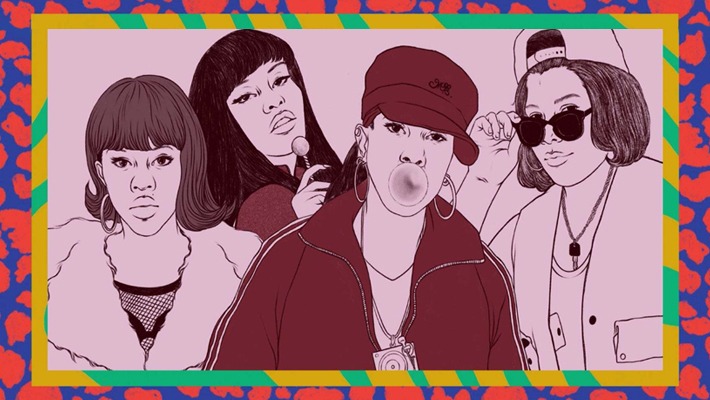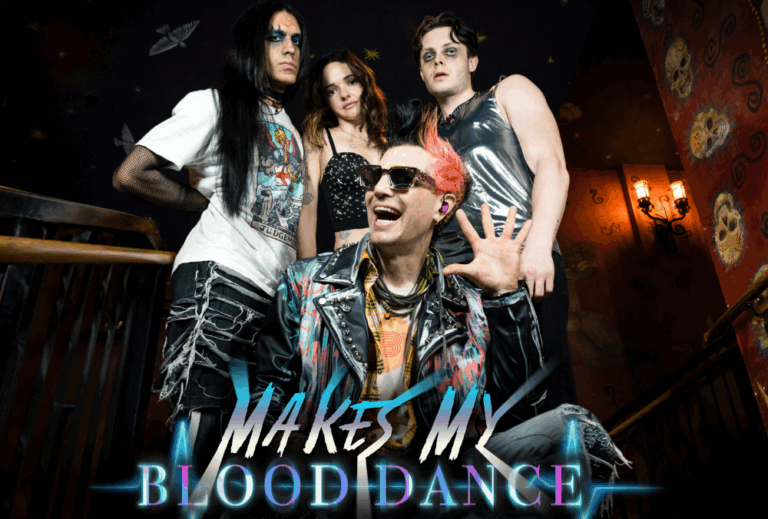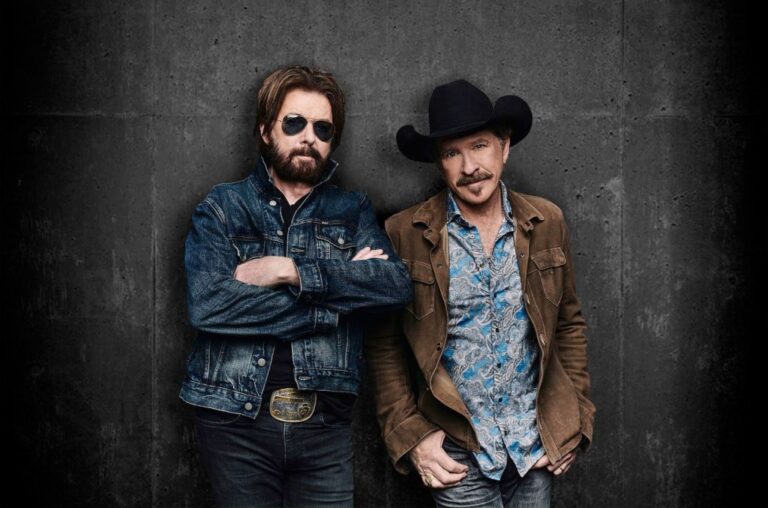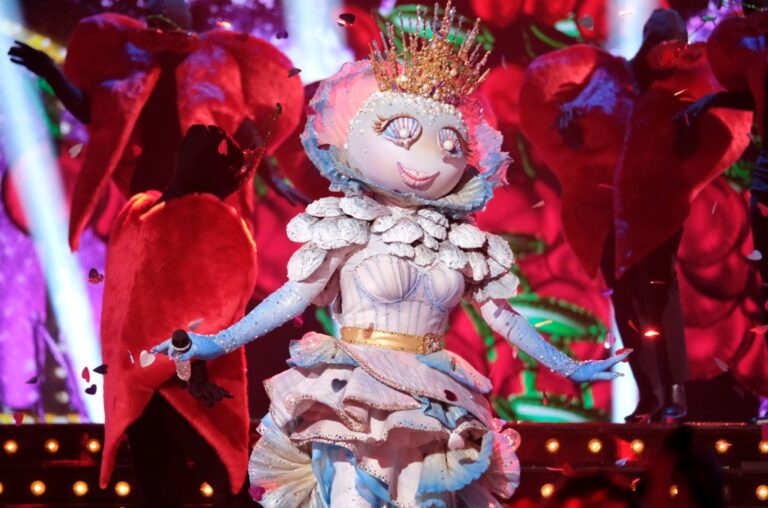When you think about women in rap, how far back does your memory go? Sure, we all know Megan Thee Stallion and Cardi B, they’re all over the radio and our phones these days as tracks like “Savage,” “Up,” and “WAP” generate inescapable memes and irresistible beats, rhymes, and choruses. Many fans’ memories begin with Nicki Minaj, widely credited — incorrectly, I might add — as the sole dominant female presence in hip-hop for much of the 2010s.
What about Foxy Brown and Lil Kim, who ruled the latter half of the ’90s, or MC Lyte and Queen Latifah, who did the same for the first few years of that decade? Maybe, if you’re old enough, well-read enough, or just an avid consumer of Netflix biopics, you know about Roxanne Shante, the center of the so-called “Roxanne Wars” that rocked New York record stores in the ’80s. That’s admirable, but you’re still well short of the full range of women journalist Clover Hope covers in her new book The Motherlode: 100+ Women Who Made Hip-Hop, out now through Abrams Books.
Over the course of the book’s 238 pages of essays, factoids, interviews, and gorgeous illustrations by Rachelle Baker, Hope leaves very, very few stones unturned in pursuit of a fuller, richer, more in-depth history of women’s contributions to hip-hop music than has ever been attempted before. I first gleaned a true understanding of the breadth of Hope’s research and commitment within the first two with the mention of Ebony Eyez, an oft-overlooked personal favorite MC from St. Louis who enjoyed a modest hit with “In Ya Face” and released her sole album 7 Day Cycle on Capitol Records in 2005 before fading from public view.
My own personal interest in the subject aside, The Motherlode represents something that was sorely needed in hip-hop’s various histories, retrospectives, and analytical texts: A woman’s perspective. Women have long been a foundational subset of the genre’s creators and for just as long, they’ve been overlooked, minimized, and left out of the narrative. Not only were MCs like Sha-Rock, Lisa Lee, Sweet Tee, and others part of the genre’s origins in 1970s New York, but women have also driven many of the genre’s innovations, produced some of its most respected hits, and in general, been a part of the rich tapestry of rap and hip-hop.
The Motherlode doesn’t just seek to correct those oversights but to also refocus the lens, to show that women belong at the center of the discussion, not its outskirts (no pun intended). Considering the massive overlap between Hope’s work and mine at Uproxx, I knew I had to talk with her about the process of adding these layers to the established history, from excavating these stories from the women who lived them, to questioning the way the history was established in the first place.
I’m sure that there are so many people who don’t even know that there are 100 plus women who made hip-hop. Where did the inspiration for this book come from?
I’m glad you said that, because I feel like one place to start is that the average person can probably name between 10 and 15-ish women rappers, either their favorites or people they grew up on. Part of it was that I wanted to increase that number, and I wanted people to get familiar with names that they hadn’t known before. Also, if they were already familiar with certain artists like Queen Latifah or MC Lyte, be able to read about them and just see them in a different context — or just in a context that brings their significance to hip-hop more to the forefront. There are people that I learned about while researching this book, and while writing it.
I think if the whole point of it, and the whole inspiration behind it was to have other people have that discovery also, where you could flip through and be like, “Oh, I remember this person,” or you could be like, “Oh, I don’t know who this person was. Let me kind of check them out.” It was really to give some visibility to women who created the culture, in a space where a lot of times they don’t — sometimes not even intentionally — get recognition. People just tend to rely on a default story of hip-hop. The more you go deeper and see all these figures, and all these women who played a role in it, the more you can see how integral they really were, and just creating a culture and not just being secondary to it.
That was the inspiration. A good example is probably MC Sha-Rock, who was one of the earlier women, one of the earlier entries in the book, and one of the earlier creators of hip-hop. She was around in the ’70s and really is considered the first prominent female MC. She performed with her group, The Funky 4 + 1 on SNL. That was one of the first, nationally broadcast performances of rap, and that contributed to spreading this culture and this genre around the world.
When you think about how this young Black girl was in the center of that stage, on national television, transmitting hip-hop to the world, at a time when it wasn’t available. People weren’t seeing hip-hop being performed. That’s major. I wanted to put it into that context, and let people see how the culture was created by women. If you could tell this story from a different angle, it’s like tilting the camera a little bit so that you see the other people you might not think about.
Now in terms of the 100 plus women, there are definitely a lot of interesting names. What was interesting to me was this tension of, or this question of, who gets to be the hundred, and who gets to be the plus. Naturally, there are some women who are given, like Queen Latifah and MC Lyte, but then you have Lady T and these other names that have to be mentioned. What was it that drew you to these specific stories?
That’s a great question. I had to experiment with the length a little bit because I do only have a certain amount of pages. I couldn’t do 500 pages, although I wish I could have.
Kim, I knew was going to be the longest, Foxy, Queen Latifah, people like that. I knew that there will be more pages for them. I basically, dedicated a certain amount to them. From there, I basically tried to decide who would get a longer profile, who would get medium, then who would get the shorter one. Some of it was based on who I got to interview.
I interviewed one-half of the Conscious Daughters — the other half, she passed away. That entry is longer because Carla gave such great information, and there was enough to make it a “need.” There Bytches With Problems. I spoke to both of them, so that is a longer entry in the book, partly because they gave me so much relevant information to the story of hip-hop. I tried to base it around, if I spoke to someone and their information was told a story about hip-hop that I need to include, I just made their entries a little bit longer. JJ fad was another one.
A lot of pluses left out, and even now I see names brought up, or just something will even just randomly catch me. I’m like, “Oh, yeah.” I don’t want to say forgot, but that person isn’t in the book. The whole point is that I can’t capture them all, it’s great that not everyone can be captured in the book. The “plus” is to signify that there are way more than even what’s in here.
So obviously this is a very personal project. You don’t do something like this unless it’s meaningful to you. So who were your first female rappers?
Definitely Missy, Salt-N-Pepa, Eve, and Kim. Those are kind of the ones I just remember feeling the most attached to, for different reasons. And Missy was just like a phenomenon and she just showed me the possibilities of just being creative and taking what’s inside your head and making it real. For Kim, it was like just, I think a lot of little girls were growing up listening to her and Foxy and kind of growing up at the same time. When she was out, she was like 18 or something, I was probably like 14. So having that young adult phase, you’re drawn to that… the mature music.
I look at them like upperclassmen. You’re a freshman but you want to be like the seniors.
Yeah, exactly. It was like we want to grow up fast. And then people like Salt-N-Pepa, I just was in love with them. They were fun and cool and they looked cool and I would buy these CDs and the whole thing was that it was not just the look and sound, but their style that I was into. They all were just so stylish and I was not at all stylish so it was kind of aspirational. Eve was like someone I felt like would go to my high school and she would be the hood girl that I would want to be friends with in school.
So in the process of expanding on your hip-hop knowledge through the process of writing this book, did you come across new favorites? What were some of the names that maybe you didn’t know before that, “Oh, this sparked something,” or this person said something, or you were surprised by this?
Definitely speaking with Bytches With Problems, just like me growing up in Queens, on the East Coast, there were definitely west legends who I did not even remember hearing the names of when I was a teenager. In the mid-’90s they were poppin’. Speaking to both of them, it was like an education for me because I’m like, “Oh yes, they were kind of pushing along this conversation about women in hip-hop and misogyny.” And “bitch” is implanted in their names. So they were kind of bringing that kind of provocativeness to the genre. Learning about their movement for me was new and it was refreshing and it definitely made me realize how much of a regional kind of bias we had growing up. Because it was always just radio.
I found a lot of stuff through radio. The “internet” was AOL. There was no kind of social media at all. So I was finding artists through Napster. It wasn’t as easy to access people from different regions. So that was a real cool discovery.
It was great to talk to people like Sweet Tee, who I kind of knew about a little, but not her story or her being part of different groups at the time. I had no idea about the story of the first women, that there was this whole kind of wrestling with who came first and who was the first female MC and how that’s been something they’ve been tossing back and forth over the years. That was probably the most poignant thing because that’s why the book is worthy. Those stories get lost through time. And like you said, there aren’t records of certain groups like Mercedes Ladies. I looked for articles about them and all of this and there was just … It wasn’t like there were reporters implanted at parties. These things were just happening and you had to be there. So the remnants are like flyers and things like that.
One of the more interesting women, I think at the beginning of that, was Roxanne Shanté because so much of her legend is built up out of other people talking about Roxanne and their songs in the Roxanne Wars. But that story finally gets to be told in the Netflix film, Roxanne Roxanne. If you could pitch your Netflix movie for a female rapper who you think doesn’t get enough shine, who would that be and why?
The one that came to mind immediately was MC Sha-Rock, because that’s, again, instantly a compelling story. It’s someone who helped create hip-hop and feels like they weren’t recognized. And she wrote a whole book about it and then still feels like she hasn’t been recognized and is kind of pushing to just have her place in this culture that has blown up and kind of, in a way, forgotten about her.
I don’t know, there’s so many. I would love to see a Queen Latifah biopic because I’m sure she would be involved in it. And the thing is, these are just starting to pop up because hip-hop biopics, in general, have just been kind of … it’s still pretty new as a subgenre… Like Straight Outta Compton, Notorious, and then the Tupac biopic. Those were, I guess because the genre is so, so young, the first kind of hip-hop biopics. Then, Roxanne Roxanne being the first for a female rapper is pretty huge.
Those stories, I think, will keep continuing because people want what they did to be remembered.
One thing that I noticed was that you have such great wordplay throughout the book, so many great one-liners, metaphors, similes, double entendres, which begs the question, did you ever rap? What was your rap name?
No one has asked me this. No, I have not rapped, but I mean, I used to write poetry that I would kind of write as spoken word. I may have done a spoken word performance once when I was very young. Very light, drunk freestyling is the most that I would do in college. My whole shtick in college was when we were drunk I would freestyle with friends. And it was the worst, lamest freestyles.
I never thought about a rap career, but I did used to want to be a recording engineer, and be in the studio, behind the boards. So I did mix some beats.
I did not have a rap name. I probably had a couple that friends gave me, like nicknames or whatever. But I think they were all based on rap names that already existed. One of my high school friends called me C-Lover because it’s still Clover. So maybe that would have been my rap name, C-Lover.
Well, I’m glad that things worked out the way they worked out because who knows, maybe you would have been one of those stories that nobody ever told. And now you’re the one telling the stories.
I guess one thing I’m trying to leave people with is to share the information of the book with a young person because I think a lot of history gets lost in the age. It’s like the digital era and some of these stories are not available online, which is why I had to track the people down. So I want young people to know a fuller history of hip-hop.
I feel like part of being a hip-hop fan or connoisseur is knowing the history has always been built into being part of the culture. You have to be in it. If you love it, know it. So I just encourage young people to just try to read it or borrow it from a friend or something … and if you can, buy it.
The Motherlode is out now via Abrams Books. Get it here.
Some artists covered here are Warner Music artists. Uproxx is an independent subsidiary of Warner Music Group.




